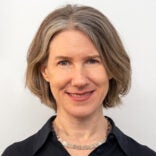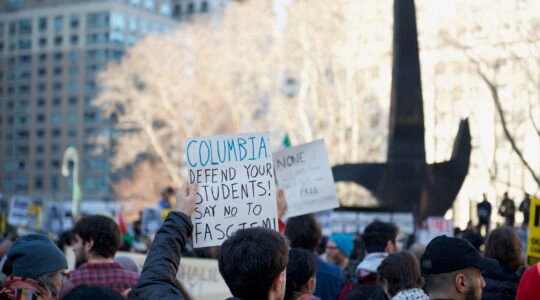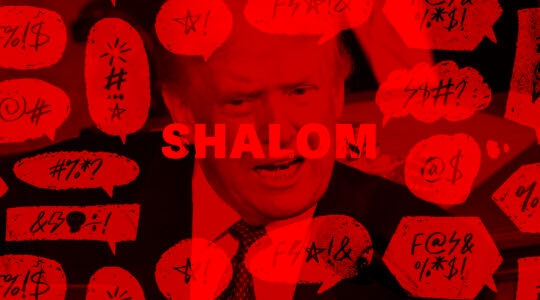Friday night. We are standing in a paved plaza beside Riverside Drive; the air is crisp, the fresh snow is sparkling like diamond dust in the setting sun. We are six feet apart and masked (I can’t wait for this combined phrase to become obsolete). We join the hazzan, chanting the Friday evening prayer, welcoming the Sabbath as the sun disappears over the Hudson River. “Come my beloved towards your bride to welcome the Sabbath.”
Suddenly I’m choked up, no longer able to sing. My eyes fill with tears and emotions. I have sung these words almost every week of my life –that’s about 2,500 times — but tonight these very familiar words feel new and deeply moving.
Perhaps it is the beauty of praying outside.
Kabbalat Shabbat, the prayer welcoming, or literally accepting, the Sabbath, is a relatively new prayer service. It was added in the 16th century by the Jewish mystical Kabbalists (note the repeating root) in the holy city of Tzfat in the Galilee. They got into the habit of leaving the city and walking out to the nearby hills and orchard. Out in nature, they sang and meditated about God’s glory as manifest in the universe and in history.
This new service was an instant hit and has become part of the prayer book canon. But for most urban dwellers, it is a rare occasion, maybe on a high school weekend trip, Shabbaton or retreat, to practice it outdoors as the Kabbalists did.
Early in the pandemic, our congregation shifted to outdoor services. We thought this would work during the summer. None of us envisioned the weekly service continuing outside through the bitter New York winter. But it did.
Perhaps it was the link to the origin of Kabbalat Shabbat, the repetition of a practice through good times and hard times, that moved me so much. We often forget to notice the magnificence of nature in the hyper-urban concrete and glass of Manhattan.
Prayer is a strange thing. We try to deeply connect with our pain and gratitude, speak to our hopes and regrets. We say these words to ourselves with a Divine intention. Prayer is something that should be so personal and private, yet I find it most meaningful when done with a community.
I have come to see communal praying as a bit like therapy. In therapy we learn to hear our feelings, accept our pain, and cherish our joys. But it is hard, if not impossible, to do this work alone. We need someone, the therapist, to help us see ourselves better. Someone who can give us permission to feel sadness and encourage us to celebrate success. Community can play a similar role. It legitimizes and creates a place for deep emotions. Together, we dare to say that life is fleeting and that the universe is vast, and history has awful moments and humanity can be inspiring. We can hold these disturbing conflicting ideas because we are doing it together, and together we feel safe and accepted. This need for community is so fundamental that our numbers have grown even as the temperature dropped.
Praying on a public New York City sidewalk, I felt exposed and vulnerable at first. Some stared, others took photos on their phone, or lingered, while their dog sniffed a shrub, to watch us, or even joined us. Can we do this? I’m sure those who use this spot for yoga on Sunday morning have felt this discomfort too.
The reclaiming of public space has been one of the surprising joys of the pandemic: restaurants using the parking lane for seating and closed streets becoming plazas for bikes and pedestrians. I realize how many things we could do outdoors if our city were designed to facilitate these activities. I hope we move toward making outdoor life in our city more easily accessible to all of its inhabitants.
The reclaiming of public space has been one of the surprising joys of the pandemic.
The pandemic has stripped our service to its bare basics. We worship without a space, without chairs, with dim light and no heat. I realized that this was all we really needed. A committed group, willing to stand in the snow and sing together.
The hazzan sings, “He removes day and brings night, God is his name” in synchrony with the darkening sky. It is getting harder to read the small print in my prayer book, but I know the words by heart.
The lump in my throat loosens and I breathe in the cold air.
Marc Cousins, the architectural theorist, said in one of his lectures that, although philosophers will not tell you this, the sign of truth is that upon hearing it one breaks into tears.
That night I was touched by truth.
Was it the pain and loss of the pandemic? The fragility of life? The support of togetherness? I’m not sure, but it was real, and it was worth bundling up for and seeking out on a freezing, snowy Friday evening.
Esther Sperber is the founder of Studio ST Architects. She writes and lectures about architecture, psychoanalysis, and culture. Born and raised in Jerusalem, she now lives on the Upper West Side in New York. Her work has been published in the New York Times, The Huffington Post, Lilith, the Jewish Week as well as many academic journals.
The New York Jewish Week brings you the stories behind the headlines, keeping you connected to Jewish life in New York. Help sustain the reporting you trust by donating today.





